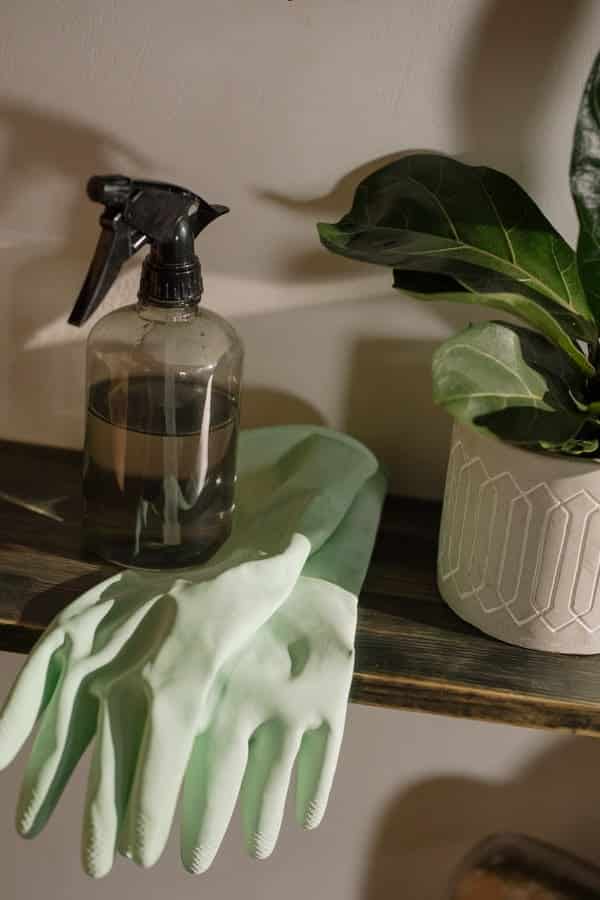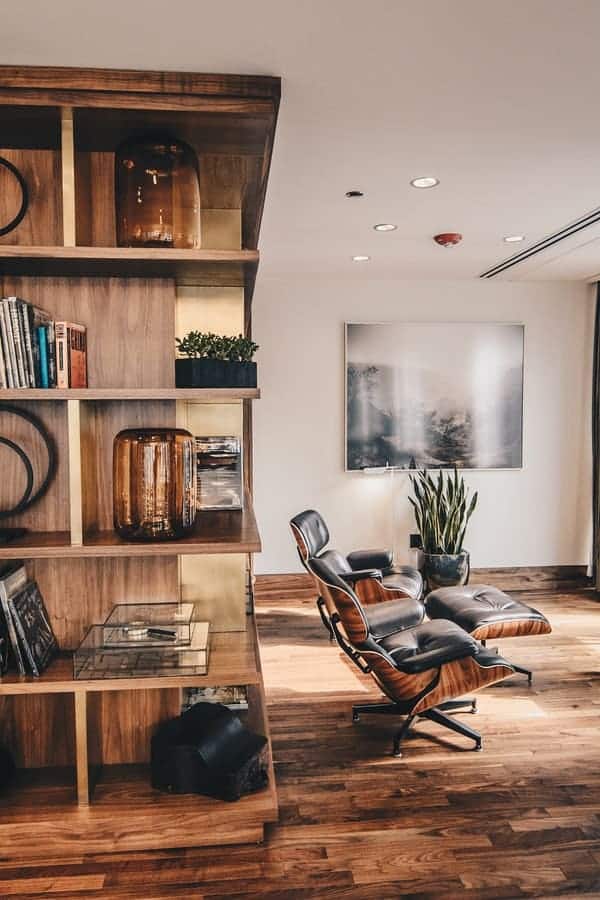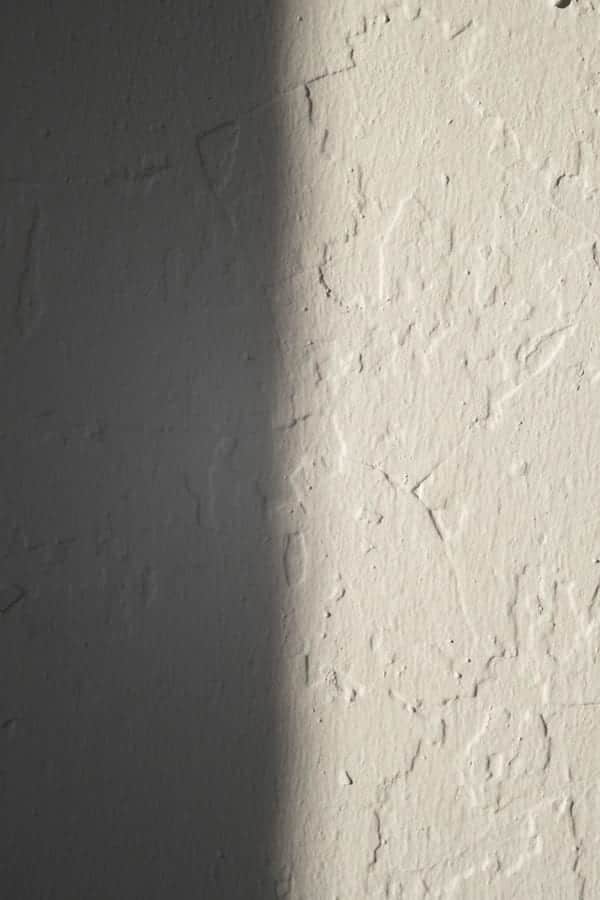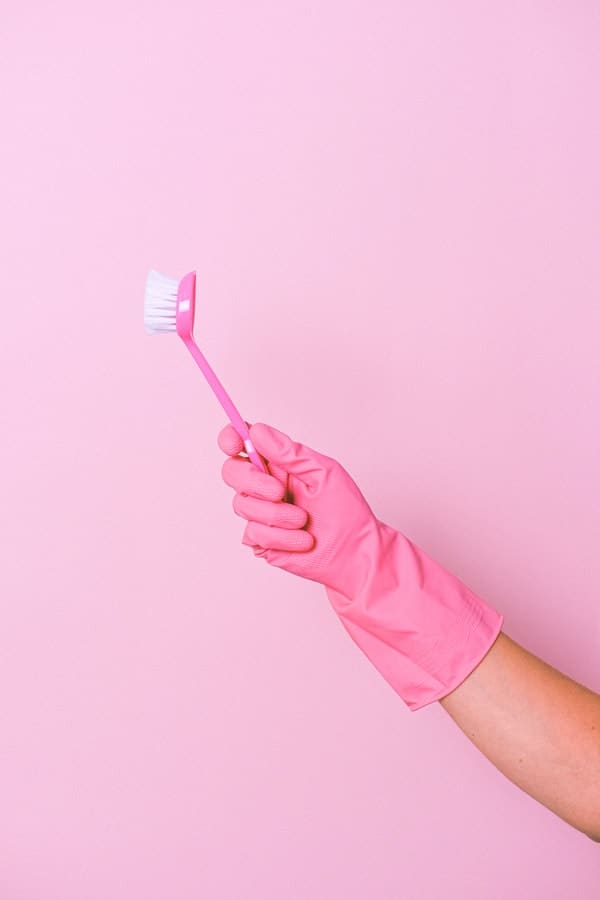The great news is that vinegar does indeed help to remove mold but there may be circumstances in which you will need to hire a professional to remove it for you. There are certain instances in which you should always hire a professional, for example when you notice that mold is in the heating or air conditioning system.
The acid in vinegar is effective in killing mold and can also reduce the chances of outbreaks occurring again. Most household vinegar will have up to 8% acetic acid in it and has a PH of 2.5 which means that it has the ability to disrupt microorganisms growing, which then leads to mold.
Vinegar works best on nonporous surfaces, often where a lot of black mold can grow.
There may be affiliate links in this article. You can read more about this in my disclosure.
Mold Outbreaks

If you notice a small amount of mold in your home then there may not need to call in a professional mold removal team as the vinegar in your pantry can do the trick. If, however, you have more than 10 square feet of mold in your home, especially in any one room, then you should leave it to the experts.
Vinegar can kill Penicillium chrysogenum but not the more stubborn and serious Aspergillus fumigatus mold. You may find that you have several areas of mold in the house that are all below 10 square feet but that may be best addressed by an experienced mold remover.
Deodorizing
In addition to removing mold and preventing mold from reappearing vinegar can clean and disinfect any area in your home. While it may not necessarily smell the best, vinegar is not as strong as you may think when you use it for cleaning and it works to deodorize smells that your home naturally accumulates.
You can also use a room spray or air freshener after you have finished cleaning with vinegar if you are worried about the smell. Be careful not to mix anything with the vinegar itself as it may cause a reaction that irritates the skin.
Using Vinegar to Clean Mold
You may be asking what type of vinegar is best for cleaning your home and killing mold and the answer is white vinegar—the regular distilled kind that you find in any store. This type of vinegar is cheap and effective at cleaning and has the correct level of acidity to clear some small areas of mold.
Some stores sell ‘cleaning vinegar’ which is usually 6% acidic but it can cost more than standard white vinegar but does exactly the same job. You don’t need to worry about buying an expensive brand of vinegar as the cheap stuff does the trick.
Vinegar should be sprayed on the affected area and left for 45 minutes to an hour before being wiped clean with water. There may be a smell that lingers for a short while but within a couple of hours, the strong vinegar smell will disappear.
[amazon box=”B07NS85MLZ” template=”vertical”]Furniture and Surfaces
If you’re you are wondering what surfaces are suitable for using vinegar you will be glad to know that it is effective on most surfaces, even on wood. When it comes to wooden surfaces, however, you should take care as certain wood finishes will be damaged by the vinegar.
If you are unsure on whether or not to use vinegar on your wooden floor as the manufacturer of the flooring. You can also use vinegar to kill mold on leather and drywall but be careful not to scrub too much that you take off the top layer and disrupt the surface too much.
When you use vinegar on leather or drywall you should dilute it with water at a ratio of 1:1. You should also spray the vinegar solution onto a cloth and wipe down the leather so it does not saturate the surface of your furniture.
[amazon box=”B07W5S412S” template=”vertical”]It is not recommended that vinegar is used on waxed wood, natural stone, aluminum, or cast iron as the acidity can damage the surface of these materials.
When it comes to applying vinegar to walls and concrete you will find that the mold wipes away without any damage but the layer of cement underneath may suffer damage. If you notice that mold is appearing on walls and concrete seek professional advice if you don’t want to risk damage.

Mold Damage
There may be cases in which no amount of cleaning with vinegar will remove mold, particularly bald mold, and you may also find that a professional cleaning surface will not work. As mold generally works on soft furnishings rather than hard surfaces like floors, you may need to replace those items/areas instead.
If you have mold on your walls you may need to strip back the paint and the top layer of plaster and re-do so that you don’t have to keep cleaning it down when it comes back. If you leave this type of mold for so long you may start to have health problems as the mold spores can affect your respiratory system.
When you notice a patch of mold you should check the rest of the surface, for example, if there is mold under your window sill check the tops of the windows and walls to see if there are any other spots of mold that may need the vinegar treatment.
Mold is best treated early on so as soon as you see small spots of mold take action rather than leaving it to develop into a bigger problem. The same goes for checking other areas of your house as one spot of mold could be down to a house-wide issue.
The chances are that if you have mold in one area of the house that there are other areas of mold too.

Warnings
It is essential that you do not mix bleach with vinegar as this will create toxic chlorine gas. You should also refrain from mixing hydrogen peroxide with vinegar as this creates peracetic acid that is an extreme irritant for your eyes and your skin.
If you have sensitive skin then you should always wear gloves to clean mold and it is recommended that a mask is used so that mold spores do not have the chance to enter your respiratory system. As mentioned, it is also important not to use vinegar on certain surfaces as it may cause damage.
If you are in any doubt as to whether to use it on a particular surface or piece of furniture you should test a small spot that is in an inconspicuous place so that any damage caused can be hidden easily.
[amazon box=”B07KR5VH84,B0076HIPCU” grid=”2″]Is Vinegar Better Than Bleach at Killing Mold?
If you are looking to mix vinegar with bleach in or hydrogen peroxide in order to be more infective, it may be as you think the mold that you have in your home cannot be cleaned with just vinegar. In fact, it is more likely that vinegar will do a better job at getting rid of mold than bleach.
It is not actually recommended that bleach is used for mold as it is not effective in clearing all traces of mold. Sometimes, it may seem that you have cleared all of the mold but there are traces of it in the background that bleach cannot usually reach.
To penetrate underneath surface mold vinegar will be more effective and if you are ever in doubt then a mold expert can offer the best advice.
[amazon box=”B07NFTM4ZY” template=”vertical”]5 steps to Remove Mold using Vinegar

To recap, if you want to safely clean small areas of mold safely and effectively you should carry out the following 5 steps:
1. Put on a pair of safety goggles, a mask, and disposable gloves before cleaning the area affected by mold
2. Add general distilled white vinegar to a spray bottle and carefully spray it on the mold. If you are cleaning leather or drywall then dilute your vinegar with water using a 1:1 ratio
3. Allow the vinegar solution to soak into the surface for around 60 minutes so that it can penetrate the layers of mold that have settled. Once the vinegar has been on the surface for 60 minutes wipe away the mold with a cloth.
4. If there are marks left on the surface and you need to scrub you can use a mixture of baking powder and water ( 1 tsp of soda for every 2 cups of water) to help remove any stubborn stains. You should think about what surface you are scrubbing though as you don’t want to destroy delicate fabrics. If the mold is on a wall feel free to use a scouring pad or sponge.
5. Rinse thoroughly with warm water until all traces of vinegar and any bicarbonate mix has been removed.
If you do have stubborn mold or mold that keeps reoccurring you may need to repeat the process a number of times until you can no longer see any mold or traces of mold spores. For persistent mold problems contact your local mold specialists as you may need professional treatment.
[amazon box=”B00467C7AE,B074H7CBXJ,B07QQKL598″ grid=”3″]


